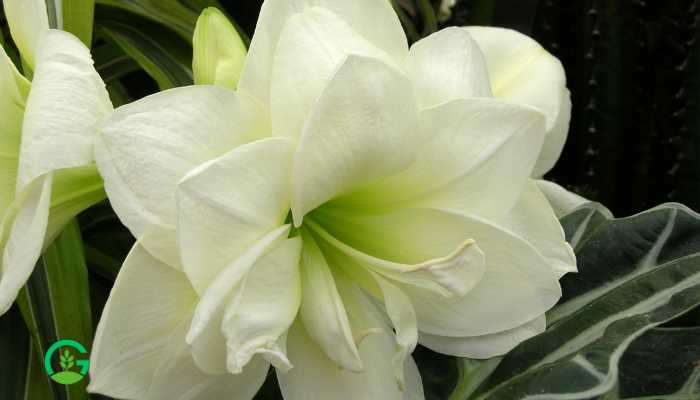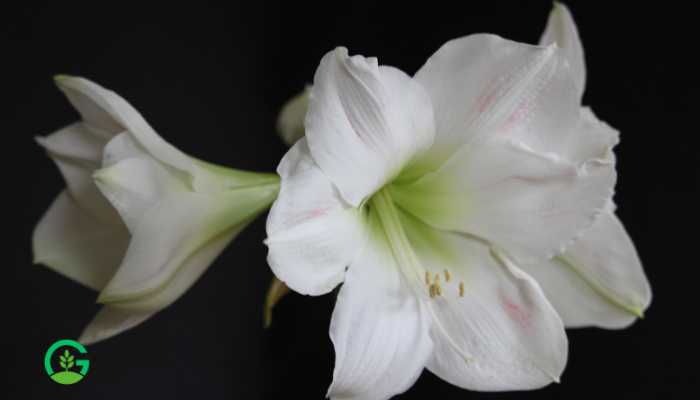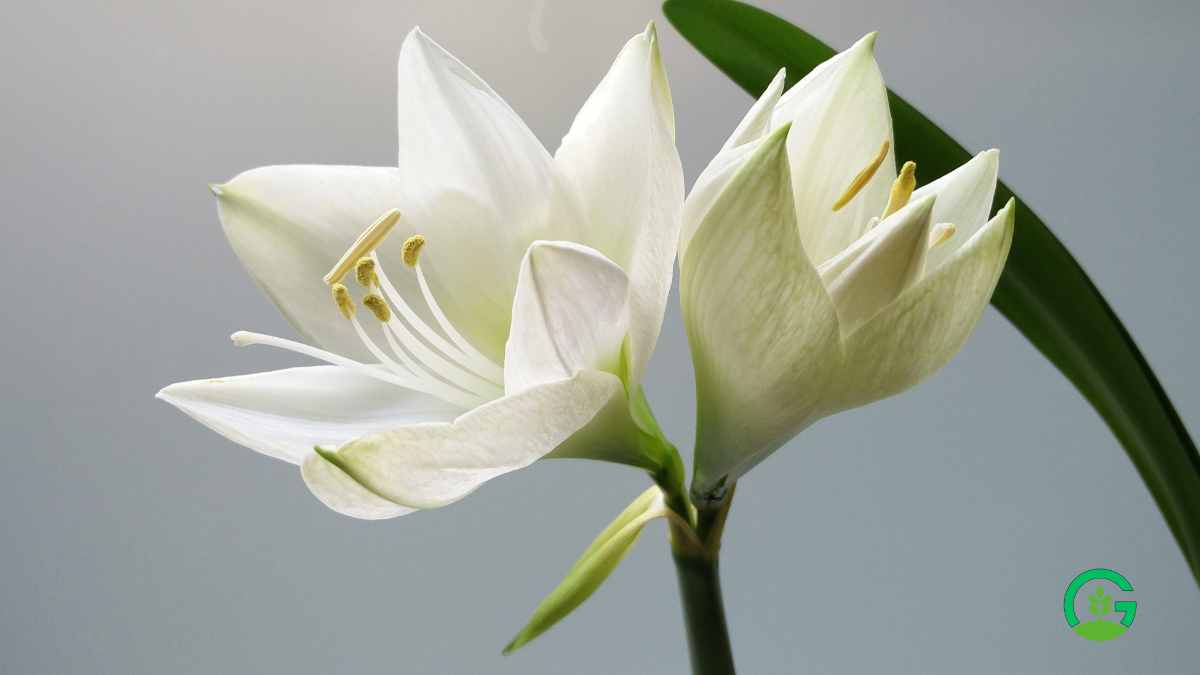White Amaryllis, with its stunning, trumpet-shaped blooms, can be a captivating addition to your indoor garden. These elegant flowers can bring a touch of sophistication and beauty to your home, especially during the winter months.
In this guide, we’ll walk you through the steps to successfully grow and care for White Amaryllis plants, ensuring they thrive and bloom beautifully year after year.
Table of Contents
Introduction to White Amaryllis
White Amaryllis plants are renowned for their large, striking flowers and ease of care. These flowers bloom in winter, making them a popular choice for indoor decoration during the holiday season. Whether you’re a seasoned gardener or a beginner, growing White Amaryllis can be a rewarding experience.
Choosing the Right Bulbs
Selecting high-quality bulbs is the first step to ensuring a successful bloom. Look for bulbs that are firm, large, and free of mold or soft spots. Larger bulbs typically produce more flowers, so it’s worth investing in premium ones from a reputable supplier.

Planting Your White Amaryllis
Pot and Soil Requirements
Amaryllis bulbs need a pot that is about 6-8 inches in diameter and deep enough to allow the roots to spread. Ensure the pot has drainage holes to prevent waterlogging. Use a well-draining potting mix, such as a blend of peat moss, perlite, and compost.
Watering Needs
Initially, water your Amaryllis thoroughly after planting, then water sparingly until growth begins. Once the plant starts to grow, keep the soil consistently moist but not soggy. Overwatering can lead to root rot, so it’s crucial to find the right balance.
Light Requirements
Amaryllis plants thrive in bright, indirect light. Place your plant near a sunny window where it can receive plenty of light but avoid direct sunlight, which can scorch the leaves and flowers. A south or west-facing window is ideal.
Temperature and Humidity
White Amaryllis prefers temperatures between 60-70°F. They are not frost-tolerant, so keep them indoors during the colder months. These plants do well in average household humidity but can benefit from occasional misting if the air is very dry.
Fertilizing Tips
Fertilize your White Amaryllis every two to four weeks with a balanced, water-soluble fertilizer. This is especially important during the growing and blooming periods. Reduce feeding once the plant has finished blooming and is in its dormant phase.

Supporting the Stems
As Amaryllis flowers grow, their tall stems may need support to prevent them from toppling over. Use stakes or a decorative plant support to keep the stems upright. Insert the support gently to avoid damaging the bulb or roots.
Dealing with Pests and Diseases
White Amaryllis can be susceptible to pests like spider mites, aphids, and mealybugs. Inspect your plants regularly and treat infestations promptly with insecticidal soap or neem oil. Ensure good air circulation around the plant to prevent fungal diseases.
Post-Bloom Care
After the blooms have faded, cut off the flower stalks but leave the leaves intact. Continue to care for the plant as usual, allowing the leaves to gather energy for the next blooming cycle. Once the leaves yellow and die back naturally, you can reduce watering and let the bulb go dormant.
Read More
Propagating White Amaryllis
Amaryllis can be propagated through bulb offsets or seeds. Offsets, or baby bulbs, can be separated from the parent bulb once they are large enough. Plant them in individual pots and care for them as you would a mature bulb. Growing from seeds is more time-consuming and may take several years to produce blooming plants.
Using White Amaryllis in Decor
White Amaryllis blooms make stunning additions to holiday decor, centerpieces, and floral arrangements. Their pure white flowers can complement various styles, from minimalist to traditional. Experiment with different pots and arrangements to enhance your home’s aesthetic.
Seasonal Care Tips
Each season brings different care needs for your White Amaryllis:
- Spring: Gradually reduce watering as the leaves die back. Store the bulb in a cool, dark place once dormant.
- Summer: Allow the bulb to rest in a dry, cool spot. This is crucial for the next blooming cycle.
- Fall: Begin to water and place the bulb in bright light to stimulate growth.
- Winter: Enjoy the blooms and provide consistent care to maintain the plant’s health.
Common Issues and Troubleshooting
Wilting
Wilting can be a sign of over or underwatering. Check the soil moisture and adjust your watering schedule accordingly.
Yellowing Leaves
Yellow leaves often indicate too much water or insufficient light. Ensure the plant has well-draining soil and adequate light.
Lack of Blooms
If your Amaryllis fails to bloom, it may need a rest period. Ensure the bulb experiences a dormant phase with reduced watering and cooler temperatures.
White Amaryllis Conclusion
Growing and caring for White Amaryllis can be a delightful and rewarding experience. With the right care, these stunning plants can brighten your home with their elegant blooms. Follow these tips to ensure your White Amaryllis thrives and blooms beautifully year after year.
White Amaryllis FAQs
How often should I water my White Amaryllis?
Water sparingly until growth begins, then keep the soil consistently moist but not soggy. Adjust watering based on soil moisture and plant needs.
Can I plant my Amaryllis bulb outside?
Amaryllis can be grown outdoors in warm climates but should be kept indoors in colder regions to protect them from frost.
How do I get my White Amaryllis to bloom again?
After the blooming period, allow the plant to go dormant by reducing watering and storing it in a cool, dark place. Resume watering and light exposure in the fall.
What should I do if my Amaryllis leaves are turning yellow?
Yellowing leaves can indicate overwatering or insufficient light. Ensure proper drainage and place the plant in a bright location.
Why are my Amaryllis stems falling over?
Tall Amaryllis stems can become top-heavy. Use stakes or plant supports to keep the stems upright and prevent them from toppling over.
















